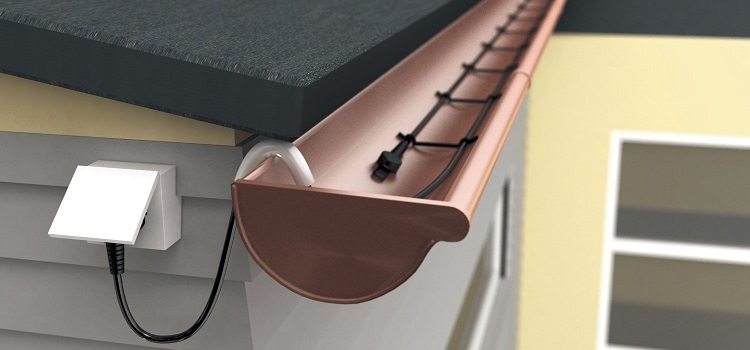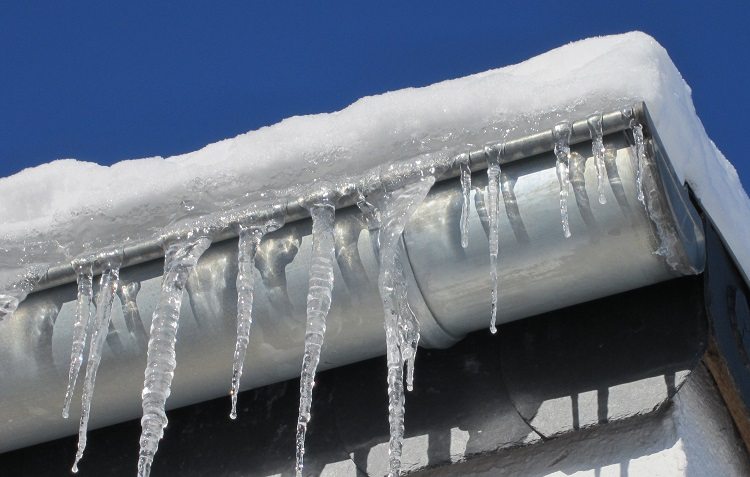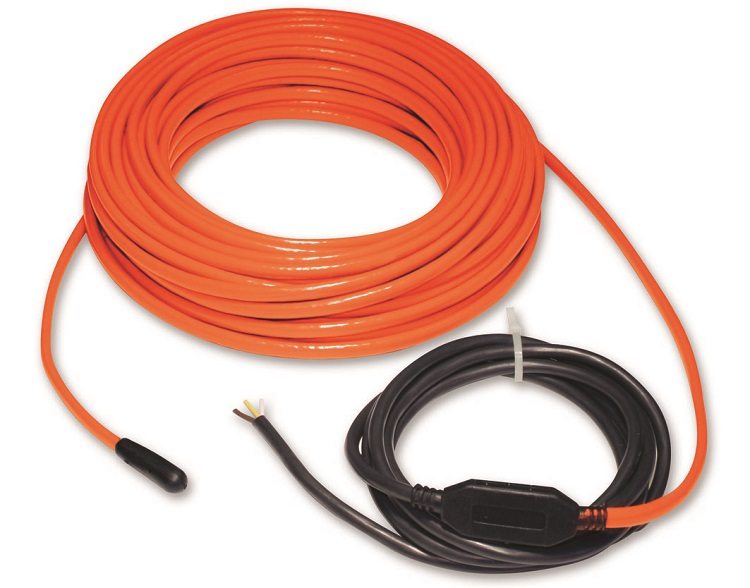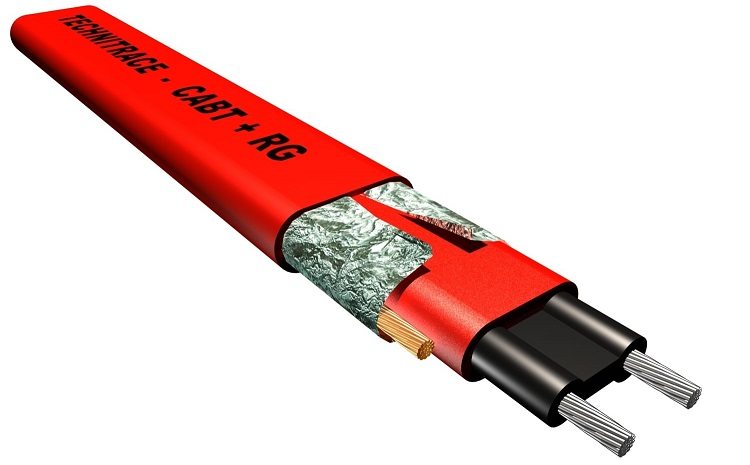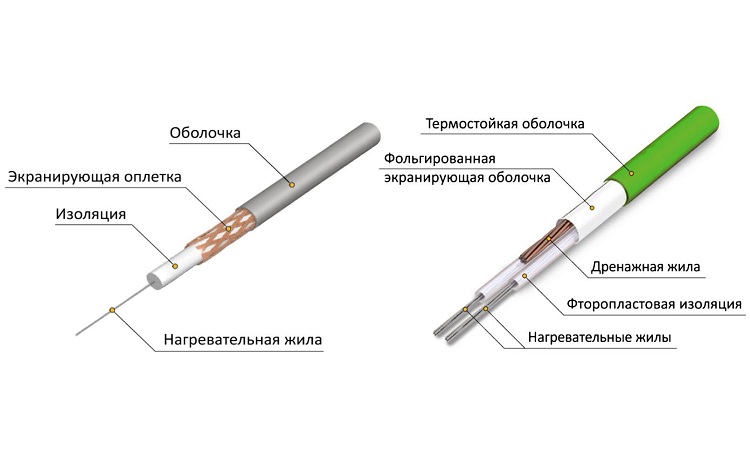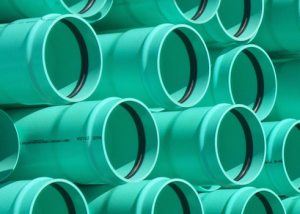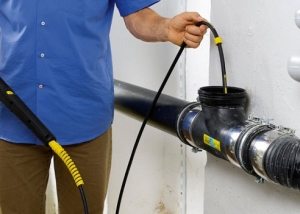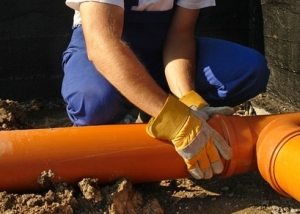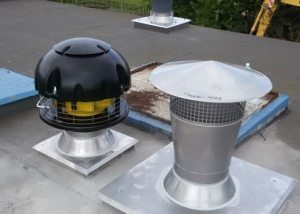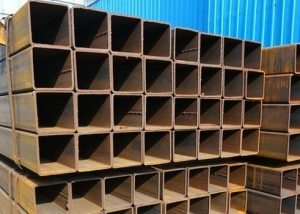In winter and early spring, you can often see the threatening species of icicles on the roof eaves of buildings. This phenomenon is due to the fact that the ice formed during the crystallization of moisture completely blocks the water path to the standard elements of the drainage system. Because of this, the probability of rupture of drainpipes increases. Avoiding these troubles and not wasting money and time on repairing gutters allows heating these utilities.
Content
The reasons for the formation of ice
Let us consider in more detail the process of the appearance of icicles on the overhang of the roof and ice in the gutter. There are two reasons:
- The difference between day and night temperatures. This usually manifests itself in the spring season. During the day, under the influence of solar energy, the snow present on the roof melts and drains into the gutter system. A nightly drop in temperature causes ice formation. If they reach large sizes, the pipe may not support their weight and simply break.
- Operation of a warm roof. In this case we are talking about mansard roofs. Even in winter they are prone to ice formation. Indeed, under the roof there is a heated room, and its heat provokes heating of the roof surface. As a result, the snow melts and water flows down the roof overhang, and when it reaches the colder eaves of the roof or falls into the same cold gutter, it turns into ice.
The organization of the so-called cold roof in combination with a competent arrangement of the roofing cake (sufficient insulation thickness and a properly arranged ventilation gap) helps prevent heating of the roof deck in winter. An alternative, and in some cases a complement to such a technical solution, is to use a heating cable for downpipes, overhangs and roof gutters.
At choosing a cable heating system The following factors must be considered:
- architectural features of the roof;
- climate of the region of residence;
- the presence / absence of an attic or attic space;
- type of roof covering material;
- roof pie structure.
It is necessary to consider whether there is an insulation layer on the roof or not, and the quality of this insulation as a whole.
Important! Installation of a heating cable for gutters and downspouts allows to completely eliminate the formation of ice, not only on the components of the gutter system, but also in other places, which are characterized by a high degree of probability of its occurrence. At the same time, the functioning of the organized drain will be ensured for the entire period during which precipitation in the form of snow and ice formation are possible.
Features and locations
Heating systems of this type do not function continuously, but only when thaws occur, that is, in the autumn-winter, as well as winter-spring period, if the temperature outside is in the range of -5 to + 3 ° C. This time is precisely the most favorable for the formation of ice and the appearance of icicles.
In addition to the heating cable for gutters, the heating system also includes temperature air sensors and special temperature controllers that control its operation in automatic mode.
In general, the following sections of engineering systems are subjected to cable heating:
- gutters of drains;
- storm sewer pipes;
- funnels of drains, including the area around them;
- drainage and drainage trays;
- eaves of roofs;
- the lines of the joints of the slopes of the roof - the valley.
Basic technical requirements and types of heating cables
The technical parameters of the cable for heating gutters and downpipes are similar in many respects to the models used to create an electric heated floor. However, due to the special operating conditions, increased requirements are put forward to the design of these products and the safety of their use. To understand their relevance, it is necessary to clearly present the principle of operation of the heating cable.
Regardless of the model, the operation of any such product is based on the principle of electrical effect. As current flows through the conductive core, it heats up. The thermal energy released by the residential is transmitted to the environment through insulating shells.
Heating cables are of the following types:
- resistive. The heating level is a derivative of the current strength. In this case, the environmental parameters do not affect the change in power. Cables can be single and two-core. The latter are available in two versions. In the first of them, the electrically conductive component is continuous, and in the second, the active regions are located zonally;
- self-regulating. A polymer insulator is placed between the cores. Its ohmic resistance depends on temperature in an inverse proportion: the less the heating, the higher the current.
When choosing the appropriate option, it is necessary to take into account that the heating cable will be exposed to freezing temperatures. But regardless of its value, the outer polymer shell must maintain strength and tightness.
The operation of the heating system of gutters and downpipes should not be affected by increased humidity. In addition, one cannot do without high indicators of mechanical strength.
Advice! Equipping the roof with a heating system, it is necessary to use special cable models. Their design and production is carried out taking into account all of the above factors. There are many variations of such products on the market.
However, when choosing, you should carefully familiarize yourself with the features of each type of heating cables, since the operational characteristics of the created system will depend on this.
Resistive model
Such a heating cable works as an ordinary heater. Its main difference is the absence of current amplitudes at the moment of switching on.
However, the use of resistive heating cable for gutters and gutters sometimes complicates the heating of these engineering structures. The formation of ice in different areas occurs with different intensities. Therefore, those of them that are very icy will have to be heated intensely. But the resistive heating cable is heated along the entire length evenly. In addition to the fact that this feature often causes overheating and its failure, some fragments of heated objects will remain under the ice, while others will be heated in vain.
For the manufacture of heating cores, copper wire is most often used. But since during the flow of current it can become a source of hard electromagnetic radiation, a shielding shell, which simultaneously performs the function of grounding, is mandatory. To prevent short circuits and to protect against external influences, several layers of polymer are provided in the resistive cable for heating gutters.
The operational features of heating elements of this type are as follows:
- the maximum permissible length is 200 meters;
- it is forbidden to cut off the resistive cable, as this will affect its performance. Before buying, calculate the total required footage.So you can choose the optimal model for the length;
- experienced craftsmen recommend buying a complete set, that is, one that includes not only a two-wire cable, but also a control device.
The main disadvantage of the resistance heating cable for downpipes is the high energy consumption. The highest heating efficiency is typical for models with a power of 100 ... 180 watts / meter.
Self-adjusting cable
Installation of a self-regulating heating cable for heating drainpipes is a more economical option, since the power it consumes depends on the outdoor temperature.
Helpful advice! To fix it in the gutter, use only a special mounting tape. It is recommended to fix the self-regulating heating cable in the drainpipe using a heat-shrinkable tube or the same mounting tape.
The design of this product also includes two cores. But the ambient temperature affects the indicator of electrical conductivity of the polymer material located between them. With its increase, the number of electrical circuits decreases, respectively, and the cable itself heats up less.
However, without additional accessories, installing such a product for heating gutters is not recommended. This is due to the fact that in winter the ambient temperature rarely rises above 0 ° C. Because of this, the number of electrical bonds in the polymer gasket will be maximum. Accordingly, heating of roof gutters with a self-regulating cable in winter will almost always be carried out at maximum power. Therefore, the possibility of self-regulation of its own temperature will be at an extremely low level.
This can be corrected by installing an additional unit for adjusting the current consumption. Switching it with a temperature sensor allows you to independently set a graph of the dependence of the heating power on the current value of the ambient temperature.
You can install a heating cable for the roof and gutters yourself. It should be laid in 1, 2 or 3 rows. The specific figure depends on the diameters of the drainage system elements. The design of the junction boxes mounted on the facade of the building to prevent the ingress of moisture must be tight.
